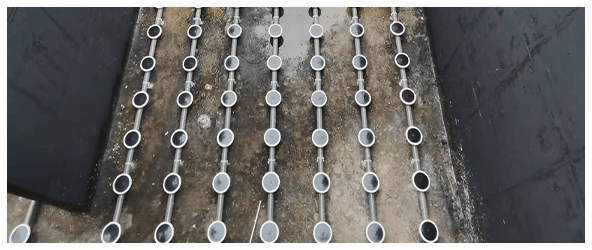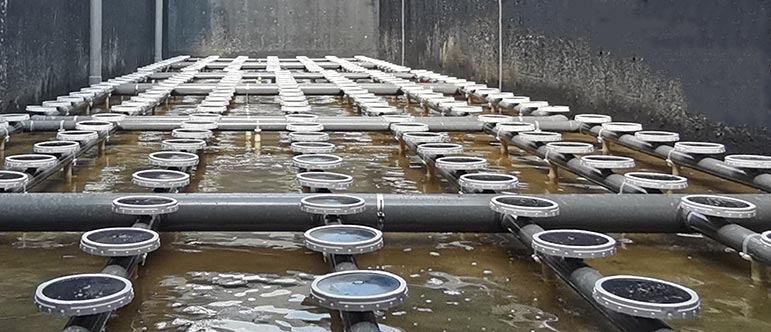Tube diffusers are devices used to introduce a gas (usually air) into a liquid (such as water or wastewater). Their main purpose is to disperse gases evenly into liquids and are commonly used in water treatment, wastewater treatment, pond aeration, and other applications.
The basic principles of Tube Diffuser
The basic principle of tube diffusers is to inject gas into a liquid through one or more small holes or micropores. These small holes are located within pipes or systems of pipes through which they are distributed throughout the body of water. When gases are delivered under pressure through these holes, they burst out inside the pipe and mix with the liquid. This process evenly disperses gas in a liquid to enable gas-liquid transfer in a variety of water treatment and aeration applications.
Tube diffusers typically have key features such as efficient gas-liquid mixing, low energy consumption, smaller bubble size, and uniform distribution. These characteristics make Tube diffusers a common tool in the field of wastewater treatment and water aeration, helping to increase oxygen transfer efficiency, improve water quality, reduce operating costs, and reduce dependence on natural resources.
How Tube Diffuser works
Tube diffusers work by uniformly dispersing a gas (usually air) into a liquid and are commonly used in water treatment and wastewater treatment. Here is a detailed explanation of how a Tube diffuser works:
Gas supply: First, gas (usually compressed air) is delivered to the Tube diffusers through a piping system. These pipes are typically connected to a central gas supply system that controls the flow and distribution of gas through valves and controls.
Tube Diffuser Construction: Tube diffusers are typically made from long tubes that contain tiny holes or micropores inside. These micropores are usually located at the bottom of the pipe but are sometimes located on the sides.
Gas release: Gas is released through micropores in the pipe of the Tube diffuser and enters the liquid (such as water or wastewater) connected to the pipe. These micro-holes are carefully designed to ensure that the gas is ejected in an even manner.
Gas-liquid mixing: When gas is released from the micropores, it enters the liquid in the form of small bubbles. These small bubbles rise in the liquid while exchanging substances with contaminants, microorganisms, or other dissolved gases in the liquid. This uniform dispersion of gas and the small size of the bubbles help improve gas-liquid transfer efficiency.
Mass transfer process: One of the key roles of tube diffusers is to facilitate mass transfer between bubbles and liquid. In water treatment applications, this often involves the diffusion of oxygen from air bubbles into the water to promote biodegradation or remove contaminants from the wastewater.
Improve water oxygenation: Tube diffusers are often used to increase the solubility of oxygen in water. This is important for wastewater treatment and water aeration, as oxygen is a key factor required by microorganisms to degrade pollutants.
In general, Tube diffusers help improve the quality of water bodies, improve wastewater treatment efficiency, and maintain ecological balance in ponds, lakes, and other water bodies by evenly dispersing gas into liquids, thus promoting gas-liquid transfer and oxygen dissolution. The efficiency and performance of these systems are often affected by design, operation, and maintenance.
 HIGH QUALITY MATERIAL IMPORT FROM USA
HIGH QUALITY MATERIAL IMPORT FROM USA FIRST CLASS PRODUCTION EQUIPMENT
FIRST CLASS PRODUCTION EQUIPMENT Clean Production Environment
Clean Production Environment Special Material Formula Design
Special Material Formula Design



 English
English
 عربى
عربى
 Español
Español









.jpg?imageView2/2/w/400/format/jp2/q/100)



































